Selected Locations

A - Drum Hill
This building was originally the first school in Peekskill to publicly educate high school-aged children.
A school building had been at this location since the site was purchased in 1859 to create the first Drum Hill School. However, by the early 1900s, a new school building was required to meet New York State's improved standards for educational facilities. These included better ventilation, heating, and lighting. The new building met these requirements, and its auditorium provided a focus for the community with concerts and debate. Built between 1909 and 1911, it initially educated children of all ages but in the 1930s became the school district’s junior high school.
A declining number of pupils and concerns about its timber roof resulted in the school's closure in June 1972. In 1979, the building was added to the National Registry of Historic Places. However, it lay unoccupied until it was bought in 1999 and converted into assisted living apartments for seniors –which is how it remains today.

B - Southard-Robertson Stove Company
This was the site of the Southard Robertson Stove Company. The factory (pictured) made heating and cooking stoves and employed 130 people. The stoves were sold across the United States and around the world.
The People’s Stove Works was established in the early 1800s by Thomas Southard. The Southard Robertson Stove Company was later formed when Thomas’ son, William D. Southard, went into partnership with George W. Robertson.
They were far from the only stove maker in Peekskill, and the industry was a major employer in the area into the 20th century. The smelting of iron had started in Peekskill in 1820 when a man named Stephen Gregory set up a foundry on Main Street where Pugsley Park is now located.

C - 1967 Riot / Rebellion
This location was once home to Miller’s Restaurant which was one of the forty-four businesses that suffered damage on the night of July 27, 1967, after approximately 200 Black youths vented their frustration at poor housing conditions, urban renewal, racist treatment in the school system, and a lack of employment opportunities and recreational facilities. In the aftermath, much of downtown Peekskill was boarded up, and a temporary 10pm curfew was instituted to curb the violence.
On July 31, Reverend Calvin Marshall led an orderly protest march from the AME Zion Church to City Hall.
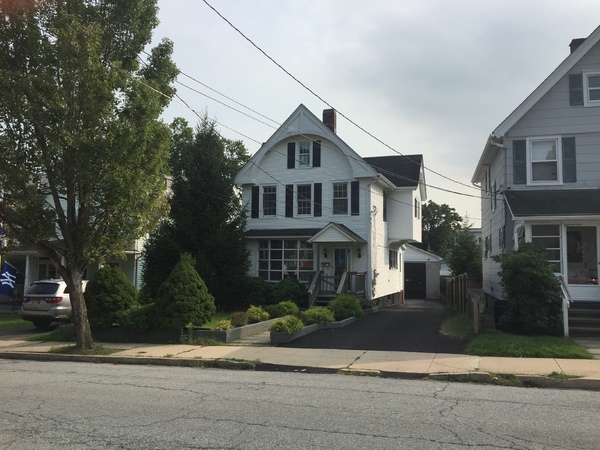
D - William Henry Singleton Residence
William Henry Singleton lived on a property at 759 Elm Street. He was a former enslaved person from North Carolina who served in the Union Army and spoke with President Abraham Lincoln at General Ambrose Burnside’s headquarters during the Civil War.
His memoir which recounts his time as an enslaved person was published in 1922. He wrote of being sold away from his mother and brothers at the age of four and being regularly whipped as a child.
At the start of the war, he was owned by a Confederate officer, but he escaped and joined the Union Army. There he displayed great leadership skills and was made a sergeant in the 35th Regiment, United States Colored Troops (the US Army was not integrated until 1948). He was wounded and honorably discharged. After living in Connecticut and Maine he moved to Peekskill in 1906. He left Peekskill in 1924 and died in 1938.
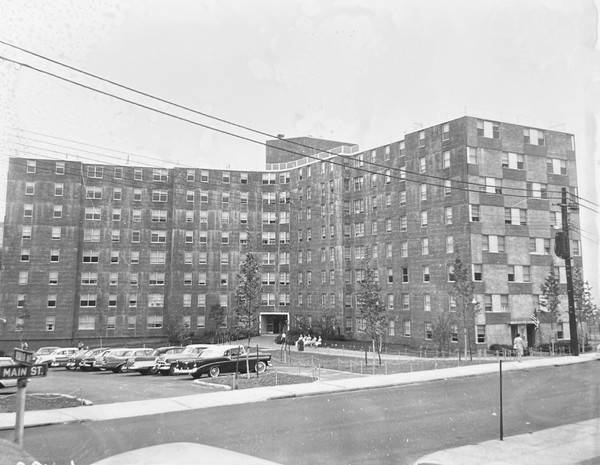
E - Bohlmann Towers
Bohlmann Towers opened in April 1961. It is one of the most prominent examples of Peekskill’s post Second World War-era urban renewal efforts. Constructed to provide more affordable housing for Peekskill’s residents, it received 500 applications for just 134 units.
Many of its initial residents were white families, but Peekskill and cities across the US were experiencing considerable demographic change at this time. Specifically, an increase in Black residents and a not unrelated decrease in white residents. In 1953, just 6% of the city’s population was Black. By 1968, this had risen to 18% – driven by both the arrival of new Black residents and the movement of white families to the suburbs. As such, the number of Black residents in Bohlmann Towers increased. In roughly the same period, the more suburban Towns of Cortlandt and Yorktown grew from 7,500 people to 25,000 and 4,700 to 28,000 respectively – while Peekskill’s total population remained steady.
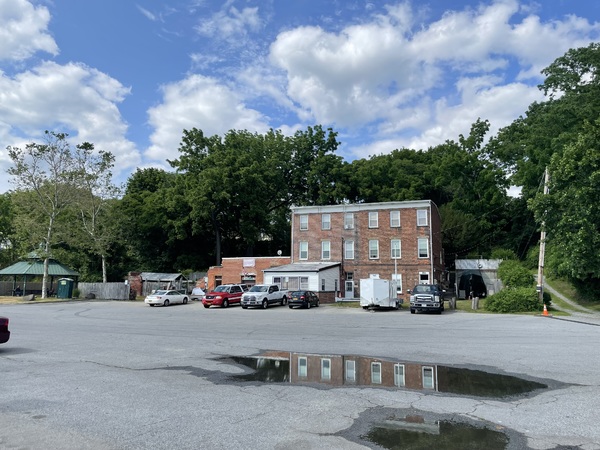
F - Brickyards at Verplanck’s Point
This was the site of the Hudson River Brick Company – one of ten brickyards that operated at Verplanck’s Point during the 19th and early 20th century. At the industry’s peak here in the 1880s, 425 workers produced over 400,000 bricks daily.

G - Peekskill Military Academy
This was the site of the Peekskill Military Academy. By the 1830s, Peekskill had grown into an industrial village with 1,300 residents. Lacking quality educational facilities for the children of the village’s more prosperous residents, leading members of the community agreed to open a private academy. Opened as the Peekskill Academy in 1833, the school was initially co-educational but in 1841 it switched to boys-only. Only in 1857 did it become a military academy. Among its notable pupils was L. Frank Baum, the future author of the Wizard of Oz, who spent two years there in the 1860s.
For well over a century, the academy was a fixture in Peekskill but by the late 1960s, anti-war sentiment generated by the war in Vietnam caused a drop in enrollment. This resulted in its closure in 1968. Later, the site would become home to the current Peekskill High School. However, only the Ford Administration Building survives from its time as the Peekskill Military Academy.
The tree from which Strang was hanged became known as the Spy Tree. It stood into the 21st century.
Today the building is used by the Peekskill City School District.
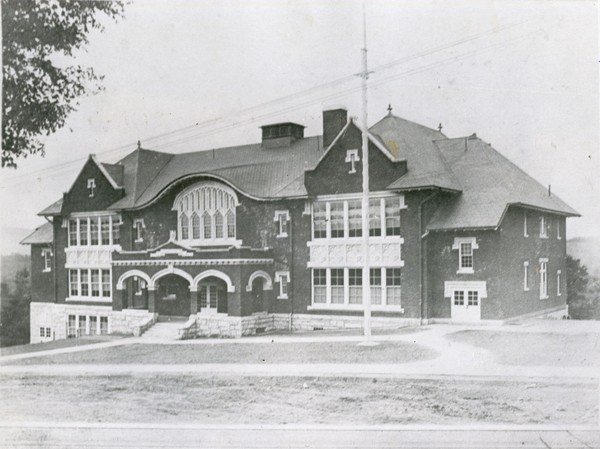
H - Uriah Hill Junior School
The Uriah Hill Junior School was opened here in 1913 to accommodate the recent growth in Peekskill’s population. Since 1900, its number of residents had grown from 10,358 to over 15,200. This increase was driven by mass immigration from Central and Southern Europe with many moving to work in local businesses such as the nearby Peekskill Hat Factory.
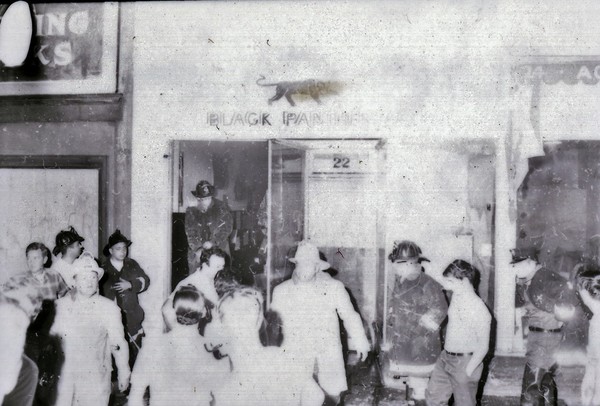
I - Black Panther Party Peekskill Office
The Black Panther Party (“Black Panthers”) had a storefront local office on this street from 1969 to 1970. The address at that time was 22 Nelson Avenue – before this part of the avenue was demolished to make way for the Field Library and City Court. During that time the branch had approximately 75 local members.
On August 1, 1969, the office was damaged in a fire (pictured). According to a newspaper report, members of the Black Panthers reported that a “firebomb” was thrown through the window. The fire department and police stated they did not find any evidence of this.

J - Peekskill Freight Depot
In 1861, Abraham Lincoln gave a speech at this site as his inaugural train made a stop on its way to Washington DC from his home in Springfield, IL. 1,500 people were reported to have attended. For some perspective, the population of Peekskill listed in the 1860 census was 3,560.
In 1865 the funeral train containing his body stopped at the same place as he was returned to Springfield.
This location is now the Lincoln Depot Museum which contains exhibits on Lincoln's Peekskill visits and his relationship to New York in general.
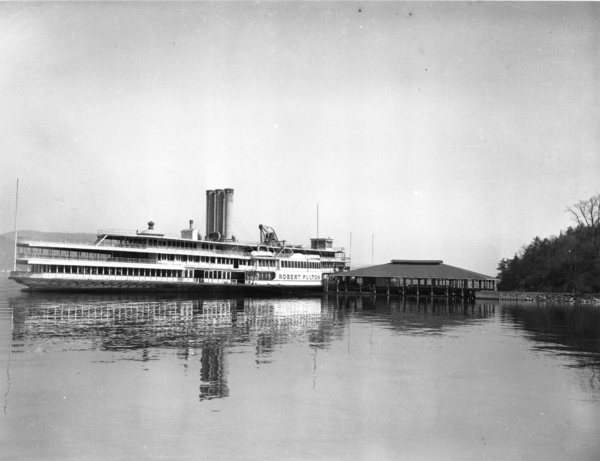
K - Indian Point
DO NOT ENTER: This area is not open to the public. It can be safely viewed from Jones Point on the other side of the Hudson River or from Annsville Circle.
This is now a deactivated nuclear power plant. It ceased operating on April 23, 2021. During its years of operation, it provided around a quarter of the energy consumed by New York City and the lower Hudson Valley. With its decommissioning New York City no longer uses nuclear power ending ‘the nuclear age’ in New York. Prior to becoming the site of a nuclear power plant, the location had several different incarnations including being an amusement park, the location of a tannery, and an area inhabited by the Kitchawank tribe.
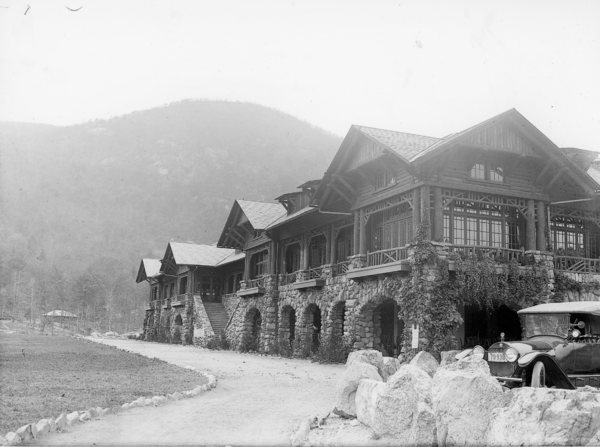
L - Bear Mountain Inn
Bear Mountain State Park and the neighboring Harriman State Park were established in 1910 as part of the Palisades Interstate Park System. Both state parks were made possible by the donation of 30,000 acres by Mary Harriman, the widow of railroad magnate E.H. Harriman. Bear Mountain Inn opened five years later as the park looked to service the increasing number of visitors.
The parks were instantly popular – over 450,000 people visited in 1914 alone. To accommodate these visitors, Bear Mountain Inn was built as an open-air pavilion with a first-floor cafeteria that could hold between two and three thousand people. Its second floor contained a more formal restaurant. While it was also open-air, it could be enclosed in cold weather. A fully enclosed third floor contained dormitories for the staff.

M - Mount St. Gabriel
Beginning in 1876, the Community of St. Mary - an order of nuns attached to the Episcopal Church - took up residence at this location. They named it Mount St. Gabriel, and during their time here built a convent, a chapel, and a school. Construction on the convent started in 1902 and was followed in 1909 by a school for girls. Later, it was the setting of the fictional school in ‘The Facts of Life,’ a 1980s TV show.
In 2003, the sisters sold the buildings and moved to Greenwich, a village near Saratoga Springs. The school building is now apartments, and the convent has been converted into The Abbey Inn, a luxury hotel and restaurant. The buildings are considered excellent examples of Gothic Revivalist architecture.
During the Revolutionary War, the site was part of Fort Hill, an important strategic location for the American Revolutionaries.
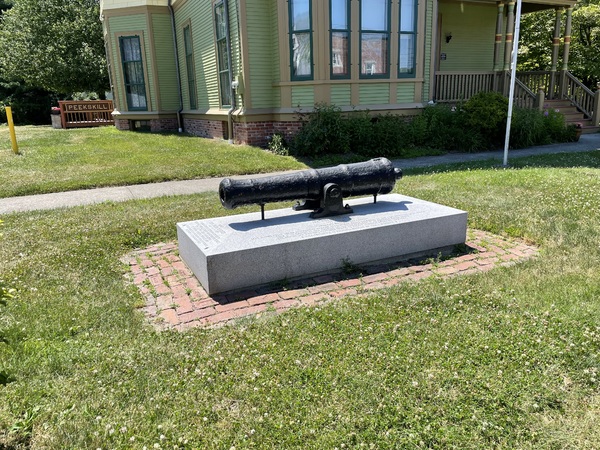
N - Revolutionary War Cannon – John Jacob Peterson
This is a cannon from the Revolutionary War. It is possibly one of the cannons that fired on the British warship HMS Vulture in an important confrontation. John Jacob Peterson, a Black soldier who was instrumental in the confrontation, has descendants that continue to live in the Peekskill area.
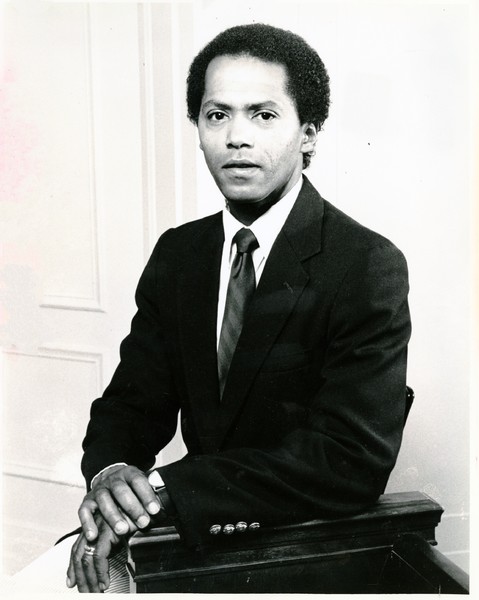
O - Richard E. Jackson Jr
Peekskill’s City Hall was the location of an important first. In 1984, Richard E. Jackson Jr became the Mayor of Peekskill and with it the first Black mayor of a city in the state of New York. A Republican, he was appointed to fill the mayoral office left vacant with the election of George Pataki to the State Assembly. The appointment made national headlines as Peekskill was arguably best-known for the 1949 riots by those protesting two concerts by the Black civil rights campaigner, Paul Robeson. Ebony magazine remarked that “the New York city that once closed its doors on Paul Robeson now has a Black mayor.” In that same article, Jackson himself was quoted saying the riots were “more political than racial.” Though he did note that his parents were upset and afraid at the time.

P - Hat Factory
In 1895, the Peekskill Hat Manufacturing Company opened on this site. It was better known locally as the Hat Factory. As the company’s name suggests, it manufactured a range of hats. It initially employed 200 people but grew considerably and by 1912 it had almost 500 workers (of which 100 were women.) This made it the largest employer in Peekskill at that time.
The Hat Factory was originally located in Yonkers but following a fire, it relocated to Peekskill. Many of its workers moved with the company to Peekskill. Significantly, the majority of these were Hungarian immigrants, and their arrival marked the beginning of Central European immigrants moving to Peekskill. In subsequent years, many others, most notably from Poland, joined them. This increase in the number of immigrants arriving was sufficient to require the opening of the Uriah Hill Junior School in 1913.
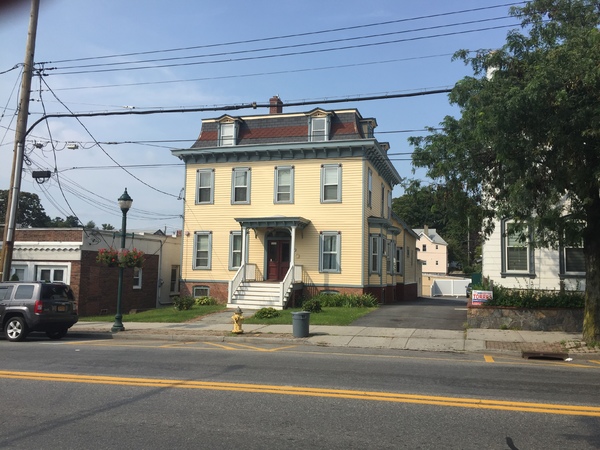
Q - Hawley and Harriet Green House
This house has been identified as a “station” on the underground railroad. Hawley Green and his wife Harriet owned the house in the 1830s. They were free Black Americans and Hawley ran a local barbershop on North Division Street.
The Underground Railroad was an informal network of routes and “stations” used by enslaved persons from the southern states to escape to free states or to Canada. For obvious reasons, records were not kept by those operating the Underground Railroad so we cannot say with any confidence how many passed through this location.
The original structure of the house from its time as a “station” is at the rear of the property. The large front section was added after the Civil War.
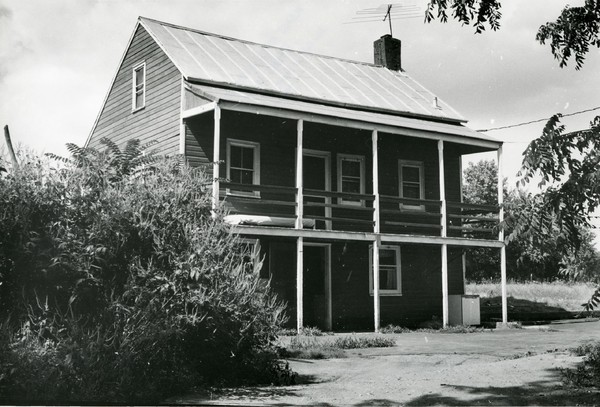
R - Lent House
This house was built by Hercules Lent around the time of the Revolutionary War. Along with twelve other family members, Hercules fought for America’s independence with the Westchester 3rd Regiment of Militia. Reports claim that his earlier house on this site was destroyed by British forces. Although, it is unclear if this happened in the Lent’s Cove raid of March 1777 or later in the war when the British reported burning two houses belonging to the Lents. Either way, the house built around that time still stands today, albeit as a ruin. And there are still descendants of the Lent family living in the Peekskill area.
The Lent family’s involvement in Peekskill goes back to the early days of European settlement. Hercules was the grandson of one of the original patentees of Peekskill in 1685. Essentially, the first European families to settle and own land in Peekskill. In the case of the Lent’s, they were originally from the Netherlands.
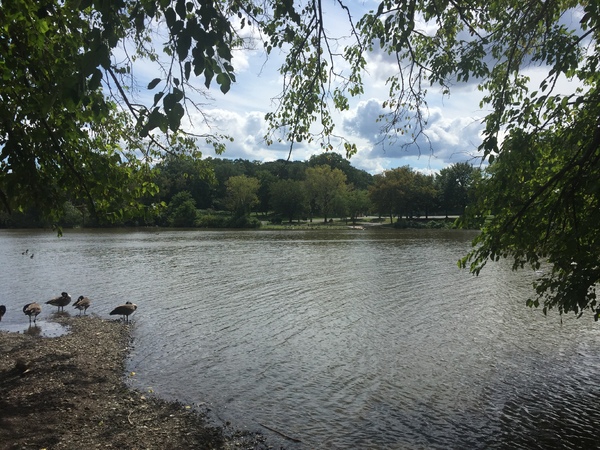
S - Lent’s Cove
During the Revolutionary War approximately 500 British forces came ashore here and launched a raid on Peekskill. They landed around noon on March 23, 1777. Upon reaching the village they burned military supply stores and destroyed a considerable amount of property. A counterattack by the American Revolutionaries was successful in chasing the British back to their ships.
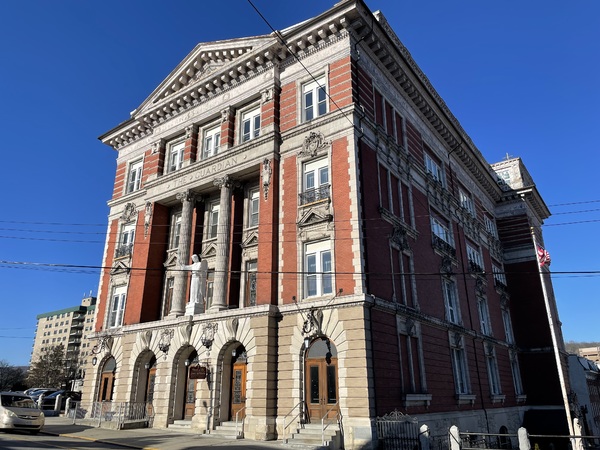
T - Church of the Assumption
The history of the Church of the Assumption reflects many of the city’s major demographic changes over the parish’s 164 years. In the mid-nineteenth century, the rapid growth of both brick and stove making brought many new residents to Peekskill. Chief among these were Irish Catholic immigrants who had left Ireland to escape the Great Famine. Lacking a place to worship in the largely Protestant Peekskill, these immigrants founded the Assumption Parish in 1859. Initially, a rented room was used for Mass services while funds were raised to build a church.
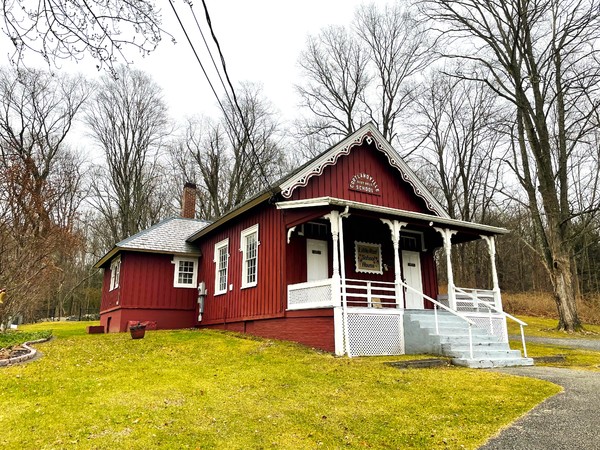
U - Little Red Schoolhouse
Built circa 1850, the Little Red Schoolhouse reflects the changes in education taking place during its history. Designed in a Gothic Revival style, it served as an educational institution until 1972. While additions and alterations were made in the early twentieth century, the schoolhouse remains a good representation of a nineteenth-century one-room schoolhouse.

V - Peekskill Post Office
This iteration of the Peekskill Post Office opened in 1931. Its construction was facilitated by new federal legislation passed in response to the start of the Great Depression – whereby federal building projects attempted to replace the massive collapse in private investment. And in doing so, create jobs and stimulate the American economy. This approach was greatly expanded by President Franklin Roosevelt with the implementation of his New Deal in 1933. While its success in countering the Great Depression is still debated by economists and historians, one clear outcome is the existence of many Depression-Era federal buildings – similar to the Peekskill Post Office – with a standardized and utilitarian design.
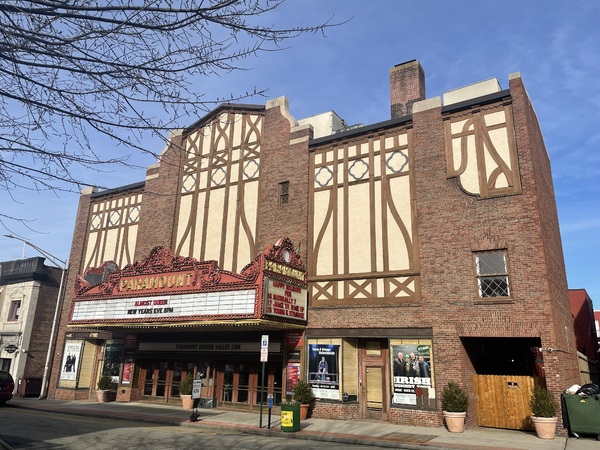
W - Paramount Theater
Opened by Paramount Pictures in June 1930, this movie theater originally seated 1,500 people. The first movie shown was the Big Pond, an early “talkie” starring Maurice Chevalier and Claudette Colbert. Similar to other large urban movie theaters built in the early 20th century, it was lavishly decorated and included a furnished lounge and Wurlitzer Organ. This amount of expense was justified by the popularity of moviegoing – between 1929 and 1949, over 83 million Americans went to the movies every week. (Note: the country’s population was less than half of what it is today.) For Americans at that time, movie theaters were the major source of entertainment and news – in addition to feature films, comedy shorts and newsreels were shown as part of a regular program.
.png)
X - Bear Mountain Bridge
At the time of its opening in November 1924, this bridge was the longest suspension bridge in the world – overtaking New York City’s Williamsburg Bridge by 32 feet. Prior to its construction, there was no bridge over the Hudson River south of Albany. It was built in response to the increasing popularity of the nearby Bear Mountain State Park and because ferryboats were no longer sufficient to accommodate the numbers of its visitors living east of the river.
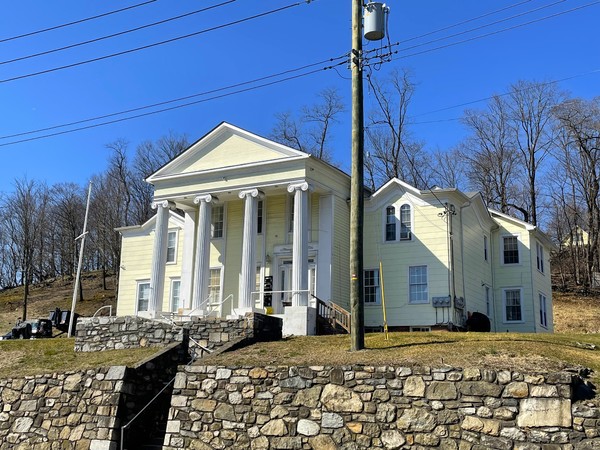
Y - Chauncey Depew Homestead
One of America’s better-known public figures in the decades around the turn of the 20th century – Chauncey Depew’s fame was such that in his 91st year he was on the cover of Time magazine. A famed orator and a major force in New York politics, he served as a Senator for New York for twelve years. However, his more lasting legacy was his in helping grow Cornelius Vanderbilt’s railroad empire – starting as the New York and Harlem Railroad’s in-house attorney, rising to become president of the New York Central and Hudson River Railroad in 1885, and serving as board chairman of the entire Vanderbilt Railroad system up until his death in 1928.
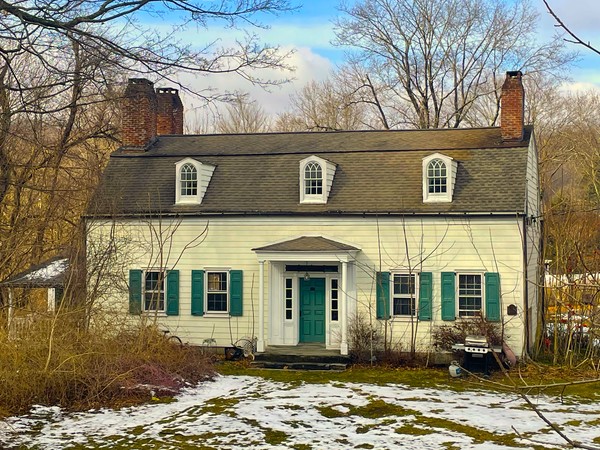
Z - John Jones Homestead
Constructed by one John Jones circa 1790 – but with elements of the building dating to the mid-1700s – the history of this property helps tell the history of Peekskill and Cortlandt from the early decades of European settlement through to today. Built on land that was originally part of an enormous parcel obtained in 1697 by Stephanus Van Cortlandt from the Lenape-Munsee people. This parcel measured approximately 86,000 acres and stretched from the Hudson River to the Connecticut border and from the Putnam Conty line to the Croton River.


